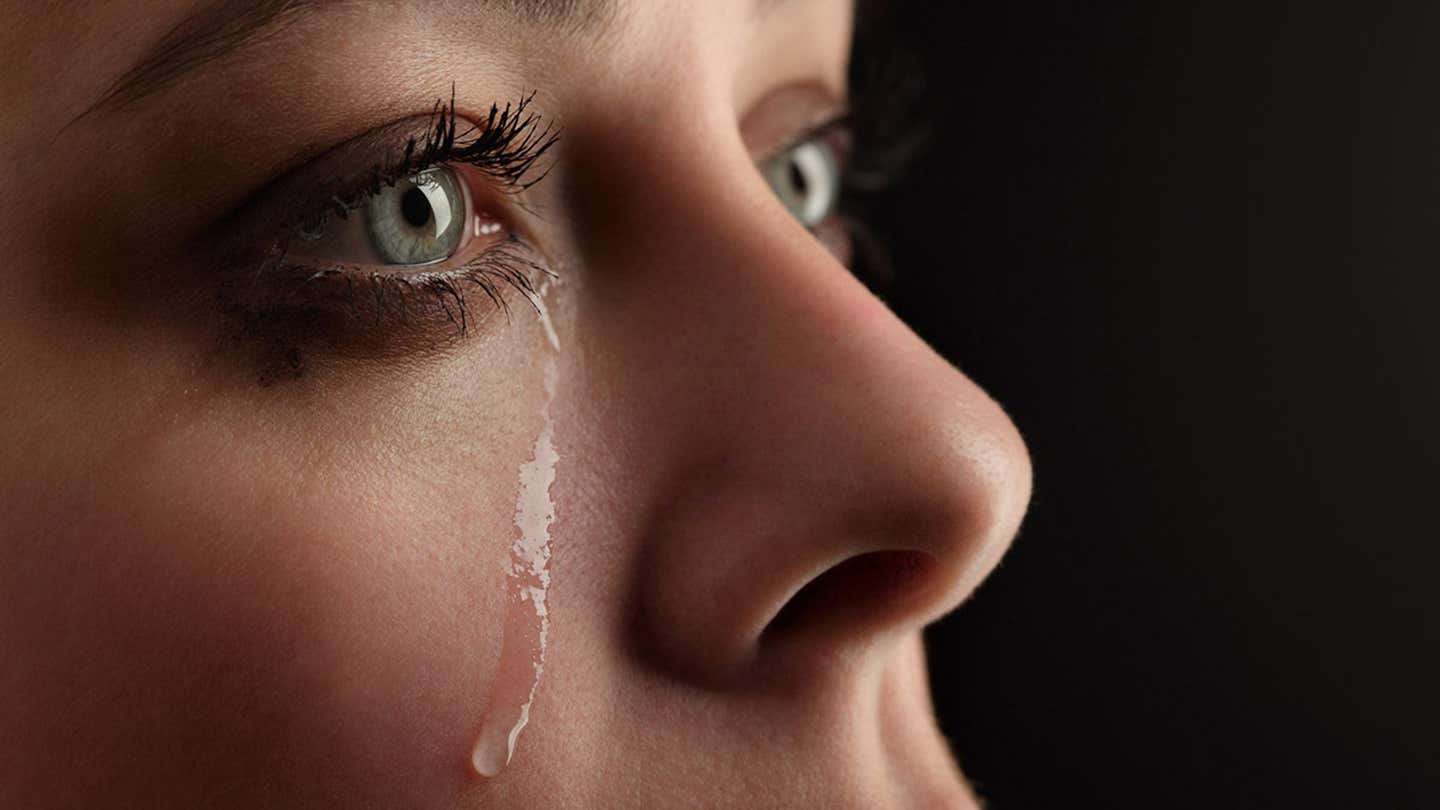Shedding tears can help diagnose illnesses, researchers find
People could soon go to the doctor, shed a tear, and know if they are in the early stages of an illness within minutes.

[July 21, 2022: Staff Writer, The Brighter Side of News]
People could soon go to the doctor, shed a tear, and know if they are in the early stages of an illness within minutes. (CREDIT: Creative Commons)
Going to the doctor might make you want to cry, and according to a new study, doctors could someday put those tears to good use. In ACS Nano, researchers report a nanomembrane system that harvests and purifies tiny blobs called exosomes from tears, allowing researchers to quickly analyze them for disease biomarkers.
The platform could enable more efficient and less invasive molecular diagnoses for many diseases and conditions, without relying solely on symptoms.
Researchers at Wenzhou Medical University in China developed a system that collects and purifies tiny droplets called exosomes from tears, which they call Embedded Tear Exosome Analysis via Rapid Isolation System, or iTEARS for short.
Diagnosing diseases often hinges on assessing a patient’s symptoms, which can be unobservable at early stages, or unreliably reported. Identifying molecular clues in samples from patients, such as specific proteins or genes from vesicular structures called exosomes, could improve the accuracy of diagnoses.
Related Stories:
However, current methods for isolating exosomes from these samples require long, complicated processing steps or large sample volumes. Tears are well-suited for sample collection because the fluid can be collected quickly and non-invasively, though only tiny amounts can be harvested at a time.
So, Luke Lee, Fei Liu and colleagues wondered if a nanomembrane system, which they originally developed for isolating exosomes from urine and plasma, could allow them to quickly obtain these vesicles from tears and then analyze them for disease biomarkers.
The team modified their original system to handle the low volume of tears.
Abstract graphic of iTEARS for disease detection based on a teardrop. (CREDIT: Discovering the Secret of Diseases by Incorporated Tear Exosomes Analysis via Rapid-Isolation System: iTEARS / ACS Nano)
The new system, called “Incorporated Tear Exosomes Analysis via Rapid-isolation System” (iTEARS), separated out exosomes in just 5 minutes by filtering tear solutions over nanoporous membranes with an oscillating pressure flow to reduce clogging.
Exosomes are extracellular vesicles released by cells, typically 30 to 150 nanometers in diameter, much smaller than most bacteria. Think of them as tiny bubbles that can carry useful things, like nucleic acids, proteins, lipids, and metabolites, to neighboring cells like a little postman.
If you look deeper into the contents of an exosome, you can get all kinds of information about a person’s health. The presence of a particular protein in an exosome, for example, could be a clue that a person has a particular disease.
Proteins from the exosomes could be tagged with fluorescent probes while they were still on the device and then transferred to other instruments for further analysis. Nucleic acids were also extracted from the exosomes and analyzed.
Scientists had previously found a way to isolate and analyze exosomes from urine and blood plasma, but this latest study was interested in seeing if the same could be done with tears.
Using their iTEARS system, the team was able to successfully distinguish between healthy people and patients with various types of dry eye disease based on more than 400 different types of proteins found in tear exosomes. Amazingly, he was able to do this in just 5 minutes.
They were also able to do the same for people with diabetic retinopathy, a complication of diabetes involving damage to the back of the eye, by looking for the presence of certain bits of genetic material (microRNAs) in the exosome.
The researchers successfully distinguished between healthy controls and patients with various types of dry eye disease based on a proteomic assessment of extracted proteins. Similarly, iTEARS enabled researchers to observe differences in microRNAs between patients with diabetic retinopathy and those that didn’t have the eye condition, suggesting that the system could help track disease progression.
The researchers are optimistic that this is just the beginning for iTEARS. They are confident that the system has the potential to use tears to diagnose conditions that don’t even directly affect the eye, including neurodegenerative diseases and cancer.
As previous studies show, we already know that certain biomarkers in tears are a strong indication that a patient may be experiencing breast cancer. By looking at the contents of the tiny exosomes, it is possible to get an even more sensitive and precise view of these types of biomarkers that indicate disease.
With a few tweaks and a little tweaking, researchers from the iTEARS project say that, in theory, a person could go to the doctor, shed a tear, and know if they are in the early stages of the disease within minutes.
“In conclusion, we set iTEARS to unlock disease secrets from a tear, revealing the promising role of tear exosomes in disease classification and tracking the course of eye disorders and other diseases such as neurodegenerative diseases.” and cancer,” the study authors wrote. “Being applied in widespread disease types and validated with abundant clinical cases, we anticipate that our tear-based iTEARS will be the alternative tool for point-of-care testing.”
For more science and technology stories check out our New Discoveries section at The Brighter Side of News.
Note: Materials provided above by the The Brighter Side of News. Content may be edited for style and length.
Like these kind of feel good stories? Get the Brighter Side of News' newsletter.



